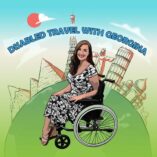Those who follow my blog here or my Instagram page on @disabledtravelwithgeorgina will know that I absolutely love a good day out with my wheelchair amongst family or friends. Planning a fun and safe day out with a powered wheelchair can definitely be slightly different from an excursion solely with an able-bodied group so I thought I’d share a few of my top tips for you to get the most out of your day! 1) PlanningMy absolute top tip for an enjoyable accessible day out would be planning. Unfortunately, many attractions, restaurant and activities don’t go into detail about the wheelchair access of their venue on their online websites. Often, it is much better to directly phone the place you intend to visit and explain your specific requirements. I will frequently find with my followers that their disability or chronic illness presents different challenges and considerations than my own. Having a detailed conversation with the staff or managers onsite at the venue you’ll be visiting is really helpful to cover this aspect. Everybody’s needs are different so you’ll find that I take a real variety of photographs at each of the places I visit so you can assess how suitable that place is for your personal needs. When I ring a new venue, I have a specific set of questions that I need answers to. Firstly, I would usually require a Blue Badge parking space near to the venue. This allows me to get my partner, Richard, to assemble my powered wheelchair close to the venue so we can easily wheel in. I use a WHILL Model C powered chair which is perfect for my needs as it separates into three sections that can easily fit into a non-adapted vehicle on the back seat or in the boot. The lithium battery of my chair lasts longer than a conventional mobility scooter battery would and is ideal during assembly of the chair since it isn’t heavy or bulky. Having this Blue Badge space near the venue will help Richard slot my chair together and give me plenty of space to transfer out of our car. I can’t walk so I would always require ramped access to any building. If a venue mentions that they have a separate disabled entrance then it’s always worth noting where this entrance is located so you don’t end up circling a building multiple times before finally attempting to open the side door you were looking for all along! Think about the weather conditions on the day you’ll be visiting as steep ramps can get dangerously slippery when trying to climb then in icy or snowy conditions. I would also need the place I am visiting to have an accessible toilet but I have no preference as to whether it requires a RADAR key to access it or is open to the public. I have experiences some horror stories where disabled toilets are concerned so I would highly recommend asking some detailed questions about this. Is the doorway large enough for a wheelchair user to access? Is there an aisle or direct route to this toilet from where I will be seated? Are there plenty of hand rails within the toilet to allow easy transfers? My WHILL Model C has omniwheels on the front of the chair so I can easily turn 360 degrees in a very tight space. However, I would definitely recommend asking whether the accessible toilet has enough room inside for an easy turning circle space. If you can spin around in the toilet then you have no worries about delicately reversing a wheelchair into a crowded bar or restaurant area!
1) PlanningMy absolute top tip for an enjoyable accessible day out would be planning. Unfortunately, many attractions, restaurant and activities don’t go into detail about the wheelchair access of their venue on their online websites. Often, it is much better to directly phone the place you intend to visit and explain your specific requirements. I will frequently find with my followers that their disability or chronic illness presents different challenges and considerations than my own. Having a detailed conversation with the staff or managers onsite at the venue you’ll be visiting is really helpful to cover this aspect. Everybody’s needs are different so you’ll find that I take a real variety of photographs at each of the places I visit so you can assess how suitable that place is for your personal needs. When I ring a new venue, I have a specific set of questions that I need answers to. Firstly, I would usually require a Blue Badge parking space near to the venue. This allows me to get my partner, Richard, to assemble my powered wheelchair close to the venue so we can easily wheel in. I use a WHILL Model C powered chair which is perfect for my needs as it separates into three sections that can easily fit into a non-adapted vehicle on the back seat or in the boot. The lithium battery of my chair lasts longer than a conventional mobility scooter battery would and is ideal during assembly of the chair since it isn’t heavy or bulky. Having this Blue Badge space near the venue will help Richard slot my chair together and give me plenty of space to transfer out of our car. I can’t walk so I would always require ramped access to any building. If a venue mentions that they have a separate disabled entrance then it’s always worth noting where this entrance is located so you don’t end up circling a building multiple times before finally attempting to open the side door you were looking for all along! Think about the weather conditions on the day you’ll be visiting as steep ramps can get dangerously slippery when trying to climb then in icy or snowy conditions. I would also need the place I am visiting to have an accessible toilet but I have no preference as to whether it requires a RADAR key to access it or is open to the public. I have experiences some horror stories where disabled toilets are concerned so I would highly recommend asking some detailed questions about this. Is the doorway large enough for a wheelchair user to access? Is there an aisle or direct route to this toilet from where I will be seated? Are there plenty of hand rails within the toilet to allow easy transfers? My WHILL Model C has omniwheels on the front of the chair so I can easily turn 360 degrees in a very tight space. However, I would definitely recommend asking whether the accessible toilet has enough room inside for an easy turning circle space. If you can spin around in the toilet then you have no worries about delicately reversing a wheelchair into a crowded bar or restaurant area! 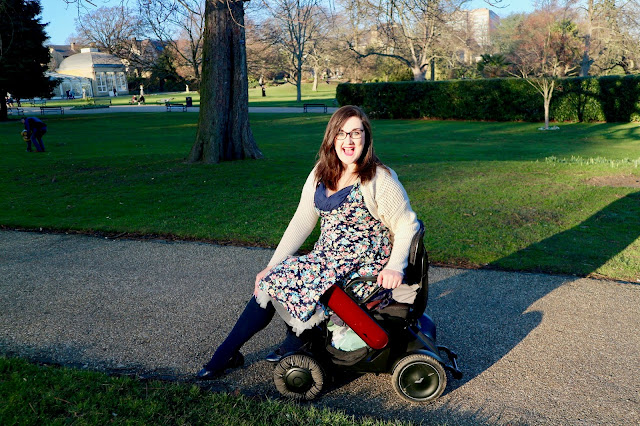
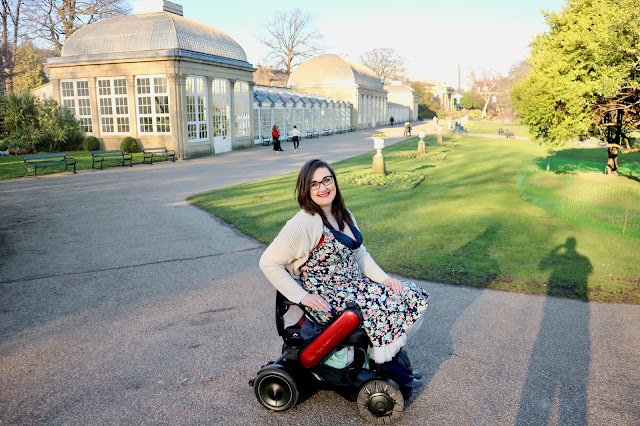 2) Pack the essentialsVenturing out of the house with a chronic illness or disability can be quite complicated. I have a ready-packed bag with all of my essentials in but these will vary according to your own needs. I always carry surplus medication so I will always be able to have this throughout the day. A bottle of water is always handy to take these medications. If you have certain illnesses or conditions then you should wear an alert medical bracelet or necklace that would explain your needs if you should require medical help and be unable to explain this yourself. There are really handy medical alert apps that you can download on every smartphone which list your medications and conditions on your lock screen. That way, even if a medical professional cannot unlock your phone, they can have an awareness of past medical history and any relevant allergies you might have. Another essential that I always carry in my bag is my power bank charger. I have an oblong shaped power bar that allows a three-pinned UK plug to charge from it. That way, I can carry my WHILL Model C charging lead and plug it in to the power bank if I am running low on power. One thing I love about my WHILL C is that it has a numerical power charge display so clearly tells you that you have 57% power remaining. This is so much clearer than a power display that represents battery life in chunks as these displays only alert when you lose another quarter of your battery. These can be dangerous if you’re planning a diverse day out as you could easily get stranded in the middle of a city with only a quarter of your battery life left! An accurate knowledge of how much battery I have remaining will allow me to plan time to charge my chair or allow enough battery for me to wheel back to the car. I have found that my WHILL C will allow me to have a full day out without charging usually but this will depend on the terrain (hills take more battery) and how far you wish to travel.
2) Pack the essentialsVenturing out of the house with a chronic illness or disability can be quite complicated. I have a ready-packed bag with all of my essentials in but these will vary according to your own needs. I always carry surplus medication so I will always be able to have this throughout the day. A bottle of water is always handy to take these medications. If you have certain illnesses or conditions then you should wear an alert medical bracelet or necklace that would explain your needs if you should require medical help and be unable to explain this yourself. There are really handy medical alert apps that you can download on every smartphone which list your medications and conditions on your lock screen. That way, even if a medical professional cannot unlock your phone, they can have an awareness of past medical history and any relevant allergies you might have. Another essential that I always carry in my bag is my power bank charger. I have an oblong shaped power bar that allows a three-pinned UK plug to charge from it. That way, I can carry my WHILL Model C charging lead and plug it in to the power bank if I am running low on power. One thing I love about my WHILL C is that it has a numerical power charge display so clearly tells you that you have 57% power remaining. This is so much clearer than a power display that represents battery life in chunks as these displays only alert when you lose another quarter of your battery. These can be dangerous if you’re planning a diverse day out as you could easily get stranded in the middle of a city with only a quarter of your battery life left! An accurate knowledge of how much battery I have remaining will allow me to plan time to charge my chair or allow enough battery for me to wheel back to the car. I have found that my WHILL C will allow me to have a full day out without charging usually but this will depend on the terrain (hills take more battery) and how far you wish to travel. 3) Travel with someoneIf you are visiting a place you haven’t been before then it is often really handy to travel with a carer, friend or family member. You’ll often see my wonderful partner, Richard, pictured alongside me when we go on our adventures. Although my powered chair gives me so much more independence than an assistant pushing my manual chair, I always have someone with me for safety. My medical conditions would make it unsafe to venture out alone anyway but I could easily tell you about thirty separate occasions where I’ve needed assistance to travel around somewhere. This may be due to a steep incline, icy/ snowy conditions making my chair loose traction or even due to stepped access into a place that told us in advance that they were accessible. Once you’ve been to a place a few times, you may feel comfortable venturing out alone but the first tries are better with a companion. Plus, a day out is so much more fun alongside friends!!
3) Travel with someoneIf you are visiting a place you haven’t been before then it is often really handy to travel with a carer, friend or family member. You’ll often see my wonderful partner, Richard, pictured alongside me when we go on our adventures. Although my powered chair gives me so much more independence than an assistant pushing my manual chair, I always have someone with me for safety. My medical conditions would make it unsafe to venture out alone anyway but I could easily tell you about thirty separate occasions where I’ve needed assistance to travel around somewhere. This may be due to a steep incline, icy/ snowy conditions making my chair loose traction or even due to stepped access into a place that told us in advance that they were accessible. Once you’ve been to a place a few times, you may feel comfortable venturing out alone but the first tries are better with a companion. Plus, a day out is so much more fun alongside friends!! 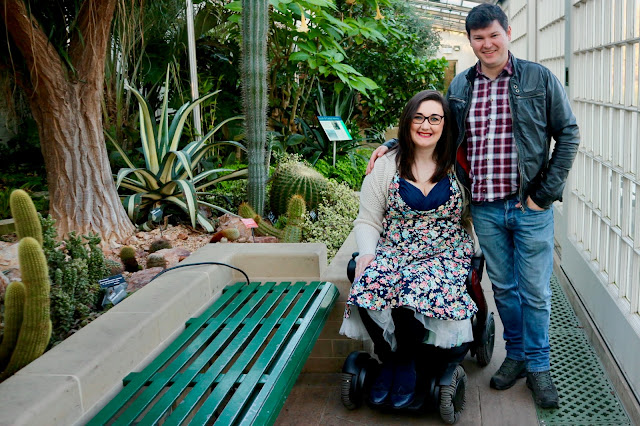 4) Know your wheelchairThis point may seem a little strange to people reading this with an able-bodied perspective on days out but it is such an important factor to allow you to remain safe! Different wheelchairs have wholly different capabilities and knowing what the chair you’re using can do is really important. My WHILL Model C has a really compact frame so I know it is perfect for weaving in and out of aisles in a supermarket or clothing store. However, I used to use a Marbella powered wheelchair which had a much larger frame that meant I struggled to access tighter spaces; particularly tight disabled toilets. I mentioned before about the omniwheels on the front of my WHILL Model C. These are great as they allow me to make sweeping turns left and right without having to drive forwards and backwards to manoeuvre around a space (think of the three point turn a car has to make when it wants to change direction). The omniwheels reduce my need to drive forwards and backwards to awkwardly position myself against a dining table or into a disabled theatre seat. I love this feature as I feel far less limited by my surroundings and I can weave in and out of tables at restaurants or bars with friends. The omniwheels are patented by WHILL so no other wheelchair is similar to this. I have spinal cord nerve damage that causes me tremendous pain when jolted so I don’t navigate rough surfaces anyway. However, I would know that my WHILL Model C doesn’t smooth out larger bumps as well as the WHILL Model M does. Therefore, I might consider using that if I regularly went out for long walks in the Peak District or similar rough terrain. Since I have no pictures to show you of the Model M, I’ll attach a link that you can follow if you’re curious about that particular model. (https://www.tgamobility.co.uk/whill/model-m) There are a huge variety of things to consider when buying your own powered wheelchair and also when you are choosing a wheelchair for that specific day out. I think having a thorough understanding of your own wheelchair will allow you to understand the places that will be easy for you to navigate and those that would be tougher.
4) Know your wheelchairThis point may seem a little strange to people reading this with an able-bodied perspective on days out but it is such an important factor to allow you to remain safe! Different wheelchairs have wholly different capabilities and knowing what the chair you’re using can do is really important. My WHILL Model C has a really compact frame so I know it is perfect for weaving in and out of aisles in a supermarket or clothing store. However, I used to use a Marbella powered wheelchair which had a much larger frame that meant I struggled to access tighter spaces; particularly tight disabled toilets. I mentioned before about the omniwheels on the front of my WHILL Model C. These are great as they allow me to make sweeping turns left and right without having to drive forwards and backwards to manoeuvre around a space (think of the three point turn a car has to make when it wants to change direction). The omniwheels reduce my need to drive forwards and backwards to awkwardly position myself against a dining table or into a disabled theatre seat. I love this feature as I feel far less limited by my surroundings and I can weave in and out of tables at restaurants or bars with friends. The omniwheels are patented by WHILL so no other wheelchair is similar to this. I have spinal cord nerve damage that causes me tremendous pain when jolted so I don’t navigate rough surfaces anyway. However, I would know that my WHILL Model C doesn’t smooth out larger bumps as well as the WHILL Model M does. Therefore, I might consider using that if I regularly went out for long walks in the Peak District or similar rough terrain. Since I have no pictures to show you of the Model M, I’ll attach a link that you can follow if you’re curious about that particular model. (https://www.tgamobility.co.uk/whill/model-m) There are a huge variety of things to consider when buying your own powered wheelchair and also when you are choosing a wheelchair for that specific day out. I think having a thorough understanding of your own wheelchair will allow you to understand the places that will be easy for you to navigate and those that would be tougher.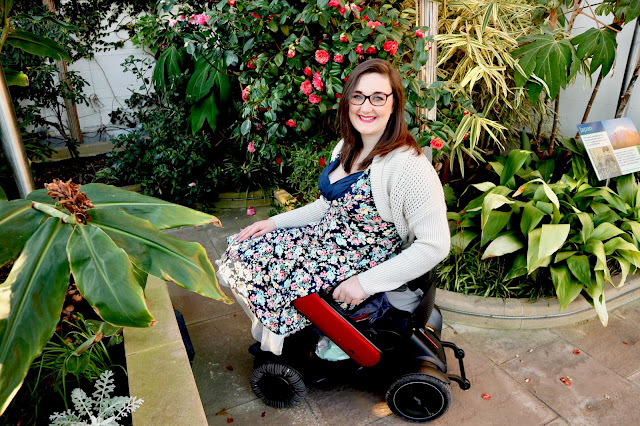
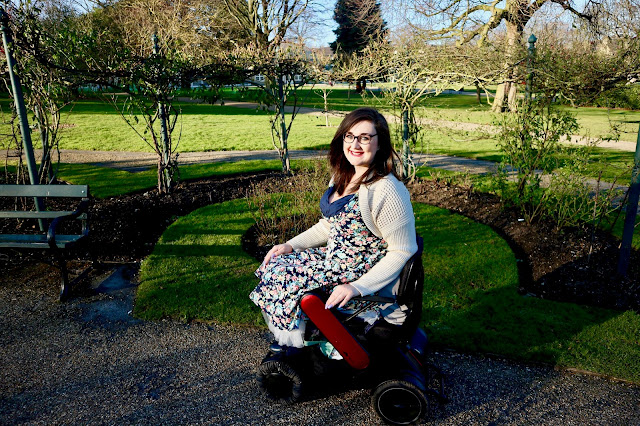 5) Make it fun!For all of my cautionary tales about planning, understanding your chair and safety, I think it’s still so important to have fun when you’re out and about! There are so many challenges when it comes to a day out with a disability or chronic illness so the place you’re visiting has to be worth the battle! Personally, I focus a lot on the company that I am with. Even if I encounter challenges getting to a new place, the memories that I create in that moment with my loved ones are more than worth the struggle! Depending on your personality, the location might be more of a focus so you might want to make sure that the food at the restaurant you visit will be delicious or the museum you go to would be interesting to you. The day is all about you and your companions having a wonderful time so that should be one of your key focusses! My blog explores lots of restaurants, attractions and days out across the UK so feel free to click on the side bar here to read my detailed reviews of each of the places I’ve visited. You never know, you might find your new favourite place to visit in my list of accessible attractions! Have a wonderful, safe day out!
5) Make it fun!For all of my cautionary tales about planning, understanding your chair and safety, I think it’s still so important to have fun when you’re out and about! There are so many challenges when it comes to a day out with a disability or chronic illness so the place you’re visiting has to be worth the battle! Personally, I focus a lot on the company that I am with. Even if I encounter challenges getting to a new place, the memories that I create in that moment with my loved ones are more than worth the struggle! Depending on your personality, the location might be more of a focus so you might want to make sure that the food at the restaurant you visit will be delicious or the museum you go to would be interesting to you. The day is all about you and your companions having a wonderful time so that should be one of your key focusses! My blog explores lots of restaurants, attractions and days out across the UK so feel free to click on the side bar here to read my detailed reviews of each of the places I’ve visited. You never know, you might find your new favourite place to visit in my list of accessible attractions! Have a wonderful, safe day out!
